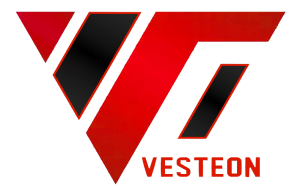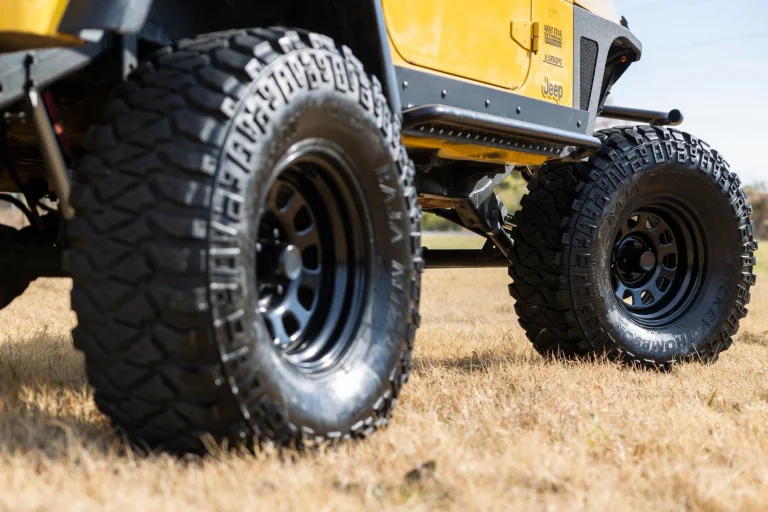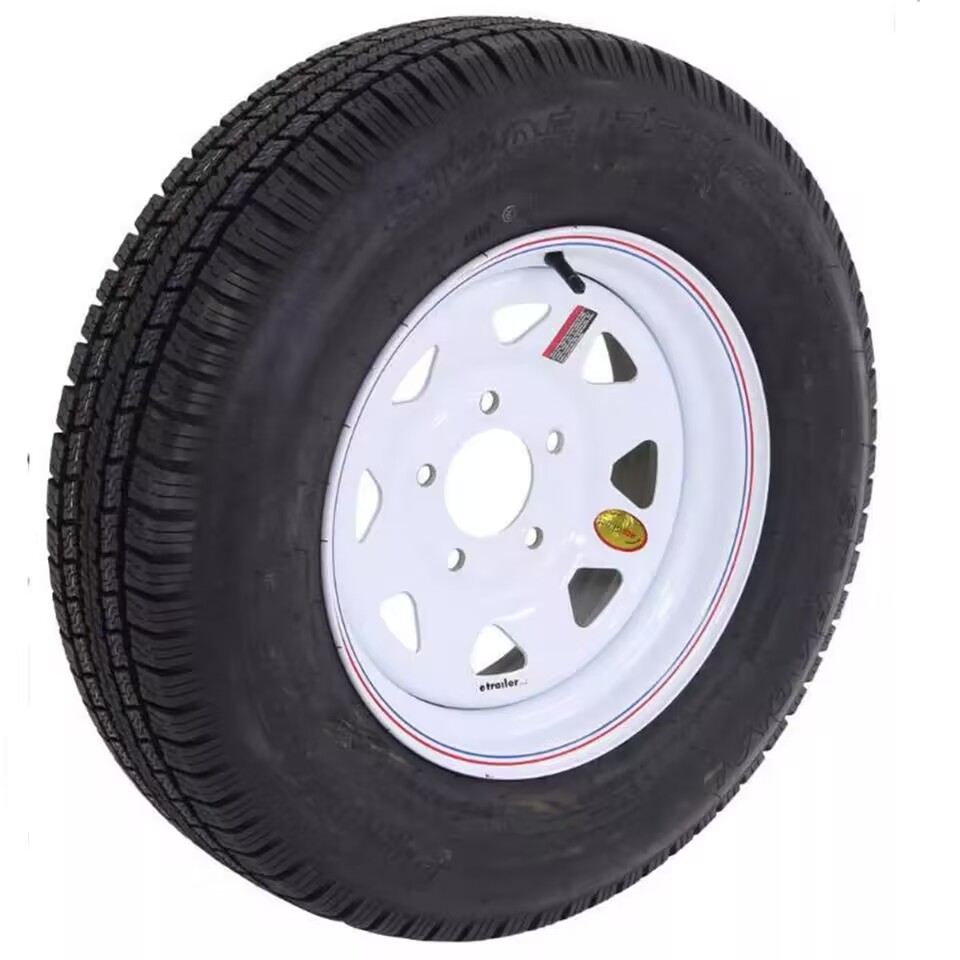When it comes to keeping your car in shape or giving it an upgrade, you’ll come across different choices that each have their special traits to offer. OEM (Original Equipment Manufacturer) wheels stand out for being linked to the original design and specifications of your vehicle. The right set of wheels can make a difference in how your car looks its safety. This guide aims to shed light on what makes an OEM steel wheel unique and provides tips for identifying them.
What Are OEM Steel Wheels?
The steel wheels that come with a car when, it’s first built are called OEM steel wheels or stock rims/factory wheels. They are designed to fit the car’s specific requirements, like weight distribution, suspension, and brake system. These wheels are carefully crafted to offer performance and safety standards. Understanding what makes an OEM wheel can guide you in selecting the wheel for your vehicle.
How to Recognize OEM Rims?
When trying to identify an OEM steel wheel, your vehicle model compatibility needs scrutiny of various characteristics. The back of OEM rims typically showcases the manufacturer’s emblem such as that of Ford or Chevy. Additionally, you may spot OEM type codes on the rear side of the wheel sometimes comprising the part number. These identifiers play a role in validating the authenticity of the wheel. By paying attention to these details you can enhance your assurance that the steel wheel matches your vehicle accurately.
Examining Manufacturer Stamps and Marks
When checking for OEM markings, look for the vehicle manufacturer’s logo on the backside of the wheel. For example, a Volvo, Audi, Volkswagen, or BMW wheel will have the maker’s logo. Additionally, the OEM part number is typically stamped on the back of the wheel, which can be useful to verify the wheel’s authenticity. BMW wheels often have part numbers that begin with 11, 66, 67, or 68. These identifiers are typically stamped into the metal and are not stickers or decals.
Checking the Wheel’s Specifications
When checking if a wheel is an original equipment manufacturer (OEM) wheel apart from the brand stamps. Part numbers stamped onto it; review its specifications as well located near the manufacturer’s marks or marked on a sticker attached to it. These specifications such as the diameter and width of the wheel along with offset and bolt pattern must align with your vehicle’s specifications for it to be considered OEM. They need to match to ensure the wheel fits perfectly onto your vehicle.
Analyzing the Wheel’s Design Features
You can also use design characteristics to help you determine if a wheel is OEM. Factory original wheels have specific design features that are unique to the vehicle manufacturer’s design language. For example, the shape of the spokes, the pattern of the bolt holes, or the overall style of the wheel may be specific to that manufacturer. You should compare these details to the original wheel design of your car. If the design seems generic or different from the original, it may not be an OEM wheel.
Are There Specific Tools for Identifying OEM Steel Wheels?
While a visual inspection and understanding of OEM marks are helpful, you can use tools to assist your process. These tools range from simple physical inspection tools to online resources that can help you make a correct determination. Knowing how to use these resources can help you make a better decision in your selection of wheels.
Utilization of Digital Tools and Resources
When looking for information about OEM steel wheels, digital tools, and internet sources can come in handy! You can check out databases by inputting your vehicle details to discover the original wheel specifications for your car model and compare them with the ones you’re considering buying or evaluating. The automotive community websites or forums can be resources too they often provide in-depth knowledge, about OEM wheels and have discussion boards where you can interact with fellow enthusiasts to seek advice or ask questions. By utilizing these tools you can boost your confidence in selecting the part for your car.
Physical Inspection Tools
Inspecting visually is important; however, you can enhance your examination with some tools too. A ruler or measuring tape is essential for checking the wheel’s dimensions such as size and width accurately. Utilizing a bolt pattern gauge verifies if the wheel bolt pattern aligns correctly with your vehicle. Additionally, a flashlight aids in inspecting OEM stamps and marks at the rear of the wheel. By utilizing these tools you can conduct a more comprehensive inspection of the wheel.
Can Vesteon Be Trusted as a Reliable Steel Wheel OEM?
When searching for OEM wheels, it’s important to take into account the manufacturer’s reputation and the range of products they offer. Vesteon is known for producing a selection of wheels, including steel ones. Assessing Vesteon’s capabilities can assist you in deciding whether they are a supplier of OEM items.
Overview of Vesteon’s Reputation in the Industry
Established in 2005 in Shandong Province of China sector is Vesteon Automotive Parts (Group) Co., Ltd. boasts an annual production capacity of around 3 million wheels per year. Vesteon prides itself on using top-notch manufacturing machinery and prioritizes quality as evidenced by its certifications from organizations like American SFI and German TUV along with Japanese VIA. Vesteons primary goal is delivering top-notch products and services with a strong emphasis on customer satisfaction.
Vesteon’s Product Offerings
Vesteon manufactures a range of wheels such as alloy wheels and steel wheels along with casting and forged options ranging from 10 inches to 30 inches in size with various finishes and styles available for selection. They provide OEM services which could make them a good match for those seeking custom or manufacturer-specific wheel solutions catered for purposes, like car repair shops and auto parts stores. They offer a selection of products and services showing that they have a range of options for wheels to suit various types of vehicles.
Conclusion
Identifying an OEM steel wheel requires close attention to details such as manufacturer’s marks, part numbers, specifications, and design features. By using physical and digital tools, you can improve your accuracy. When considering manufacturers like Vesteon, you should evaluate their history and product offerings to confirm they can provide reliable OEM products. By carefully examining these aspects, you can make a more informed decision about the wheels you choose for your vehicle.
FAQs about Identifying OEM Steel Wheels
When delving into the realm of OEM steel wheels knowledge further you might discover questions that pique your curiosity. Here are a few common queries that often arise to provide you with some guidance.
How can I verify if a steel wheel is truly OEM?
When you want to confirm whether a steel wheel is genuinely OEM-made or not start by looking for the brand’s emblem. The OEM part code is inscribed on the rear side of the wheel. Match the wheel’s characteristics with the specifications provided by your vehicle’s manufacturer. You can also refer to internet archives community platforms and car dealerships to check the identifying details of the wheel. By comparing the attributes of the wheel with trustworthy sources you can authenticate its legitimacy.
What are the common misconceptions about OEM steel wheels?
One common misconception is that OEM wheels are always better than aftermarket wheels. While OEM wheels are made to meet the vehicle’s specific requirements, some aftermarket wheels can be designed with enhanced performance characteristics. Another misconception is that any wheel that looks like the original is an OEM wheel. Some aftermarket companies make replica wheels, which may look very similar to OEM wheels but may not be of the same quality or have the same specifications. It is essential to verify that the wheel has the correct markings and specifications to determine if it is truly an OEM part.
Why do some vehicles perform poorly with non-OEM wheels?
Cars may not function well with aftermarket wheels if they don’t meet the specifications of the car exactly right like size or offset differences and varied bolt patterns can mess up how the vehicle handles or stops safely and smoothly. Also using fitting wheels might lead to tires wearing out faster than usual affecting suspension parts and brakes prematurely too. Ensuring that the wheels used in a vehicle meet the manufacturer’s specifications is crucial for maintaining the safety and performance of the vehicle.


